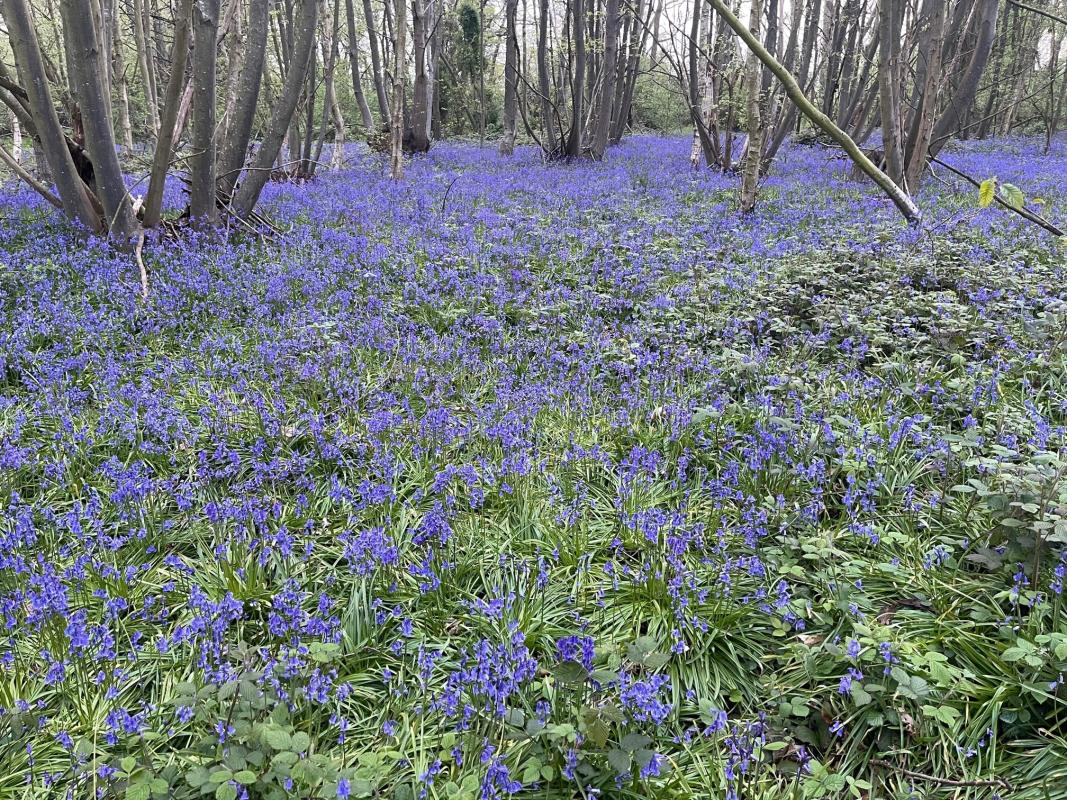Species that migrate from other areas represent one of the five major threats to biodiversity conservation. Their migrations are monitored as closely as possible around the world to conserve native ecosystems and their resident species.Long standing British speculation that the native bluebell (Hyacinthoides non-scripta) could be wiped out as a result hybridisation with rampant ‘invaders’ from the Iberian Peninsula appears to have been unnecessary. New research* indicates that the genetic threat to H. non-scripta by what is commonly referenced in the United Kingdom as "Spanish bluebells" is relatively minor – and has generally been aided by well-intentioned humans bulking-up plant populations. Yet more surprisingly, the much-derided non-native is not what wasy assumed, according to the international team of scientists led in the study by the Royal Botanic Garden Edinburgh (RBGE). "The result shows once again how important it is to take a close look at biodiversity. Only on the basis of scientifically sound results can effective measures be taken to protect biodiversity locally, regionally and globally," comments Prof. Johannes Vogel. The Director General of the Museum für Naturkunde Berlin is co-author of the study, which he co-initiated while still Keeper of Botany in London and which was conducted under the direction of the Royal Botanic Garden Edinburgh (RBGE).
For centuries the British bluebell has shared habitats with non-natives, commonly referred to as ‘Spanish’ bluebells (Hyacinthoides hispanica) and a hybrid of the two. This has caused widespread speculation that ongoing interbreeding could intermix the gene-pools to such an extent that pure H. non-scripta becomes extinct.
To understand the true nature of the potential threat, the new study set out to quantify the extent of hybridisation between the native and non-native species. But, the starting point had additional complications through taxonomic uncertainty over the exact identity of the non-native bluebells in the UK.
Genetic analyses of 501 bluebell samples from 56 populations around Britain and the Iberian Peninsula brought to light the fact that the non-native bluebells collected in Britain were not actually the ‘Spanish’ bluebell but a hybrid of it and the British species. Furthermore, Portugal, not Spain, was actually the country of origin of the first H. hispanica introductions to the UK.
Under closer examination, not only did hybrids make up just 16 per cent over the overall number studied but backcrosses between the hybrid non-native bluebell and the British species were primarily found in public parks. Of native bluebells sampled from natural habitats, only two per cent showed evidence of introgression - the transfer of genetic information back and forward from one species to another as a result of hybridisation.
Dr Markus Ruhsam, a molecular ecologist at RBGE and lead author on the research paper explained: “Although hybridisation might be frequent in locations where non-native British bluebells have been introduced, we found no evidence of large-scale introgression in natural H. non-scripta populations.
“This might explain the widespread nature of the non-native hybrid in the UK. Rather than hybrid vigour and enhanced competitive ability, it is likely that planting of the non-native in private and public gardens – combined with mislabelled nursery stock - might have facilitated its country-wide distribution.”
Professor Peter Hollingsworth, Director of Science and Deputy Keeper at RBGE concluded: “The key message emerging from this study is that, while hybridisation might be frequent in locations where non-native bluebells have been introduced on a large scale, such as in the grounds of stately homes or residential areas, gene exchange does not appear to be widespread beyond the immediate contact zone.
“With lack of human intervention, hybridisation is limited in native bluebell habitats such as woodlands and rural hedgerows. Even in residential areas bordering natural bluebell populations, hybrids rarely spread out of the contact zone. Far from worrying about ‘extinction-by-hybridization’ of H. non-scripta in the UK, there should be some comfort in the fact that, left to their own devices, the native British bluebells have massive advantages over non-natives.”
"In general," Professor Vogel points out, "seeds and plants of regional origin prove to be better adapted to climatic and regional conditions and are also more resistant. It should therefore also be given preference in the design of roadsides, parks or gardens."
Publication: “Is hybridisation with non-native congeneric species a threat to the UK native bluebell Haycinthoides non-scripta?”, Ruhsam, M.; Kohn, D.; Marquardt, J.; Leitch, A.R.; Schneider, H.; Vogel, J.; Barrett; S.C.H.; Hulme, P.E.; Squirrell, J.; Hollingsworth, P.M.;
https://doi.org/10.1002/ppp3.10387; Open Access, in Plants, People, Planet.
